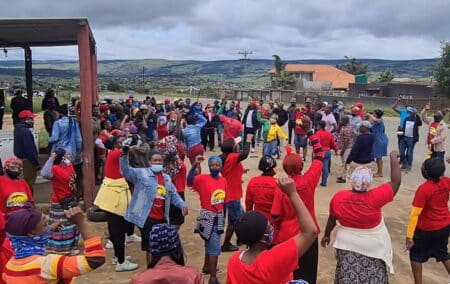In eastern Mpumalanga this month, a ‘labour dispute’ ended in death. Two narratives emerge about the build-up. One revolves around murderous ‘white monopoly capital’, the other turns on several failures leading to revanchism and police ‘heartlessness’. Which stands up to evidence?
Fana December Nkosi, aged thirty, died on 2 February, after being shot during a protest outside a sawmill in Mpumalanga. Police have opened a murder case. Three security guards and one manager from the sawmill have been arrested and charged with murder, as well as three counts of attempted murder. What follows is an attempt to understand what led to Fana Nkosi’s death.
Nkosi is survived by his sister, Nthombifathi Nkosi, and a five-year-old son. ‘It is painful, I am heartbroken’, Nthombifathi told me a day after the death of her brother. They had lived together, and had no other surviving relations.
Construct Mwelazi, a manager at the sawmill where Nkosi used to work, described the dead man as ‘a brother’ and a ‘good guy’ who showed exceptional dedication to his job. Nkosi was the sole breadwinner in his household.
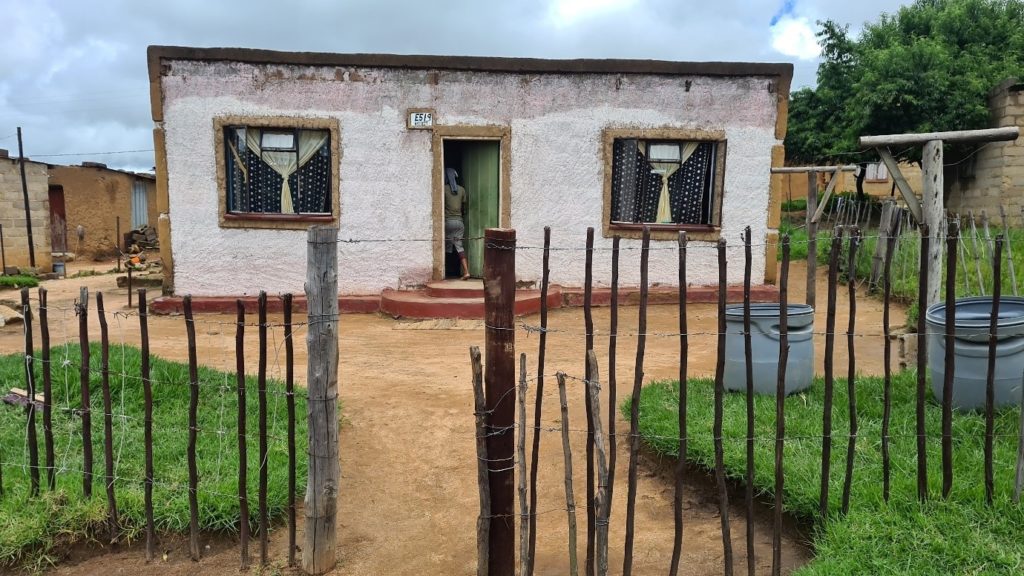
Empuluzi is the scene of this mystery, officially listed as a ‘town’ in eastern Mpumalanga, bordering Eswatini (Swaziland). Online, there are no statistics about the population sprawled across the district’s rolling green hills, and finding information on the ground is not much easier.
A taxi driver cruising by gestures from his window as if to toss something at me while shouting ‘Eh umlungu [white scud]!’ The first group I approach are three teenage males walking on the side of the road. As we start talking one of them half-turns, unzips, and urinates while staring at me. They do not yet know about Fana Nkosi, the one who died a day earlier.
At the decrepit Empuluzi Community, Safety, and Liaison municipal building, no one seems to be at work except two security guards, who quickly exhaust my limited Zulu, and refuse to speak English, while ushering me off the property. Once we are on the street, however, one of the guards suddenly provides directions in perfect English.
I am looking for the ‘dirt road’ police station, which is not registered on any online maps. The police station is a relief, literally; the only place in ‘town’ with a publicly accessible toilet. As one resident later said: ‘There are only two places to work in Empuluzi. The government. Or the sawmill. We don’t have enough here even to sustain one small complex, or so much as a Boxer [shop].’
That is not quite true. There are also taxis, outdoor car washes, spazas, shebeens, and agricultural ‘piece-jobs’ in the timber plantations around. But, with around 300 former full-time permanent staff, the sawmill where Nkosi worked is a singular economic source of value add, an actual beacon atop the turbulent hill.
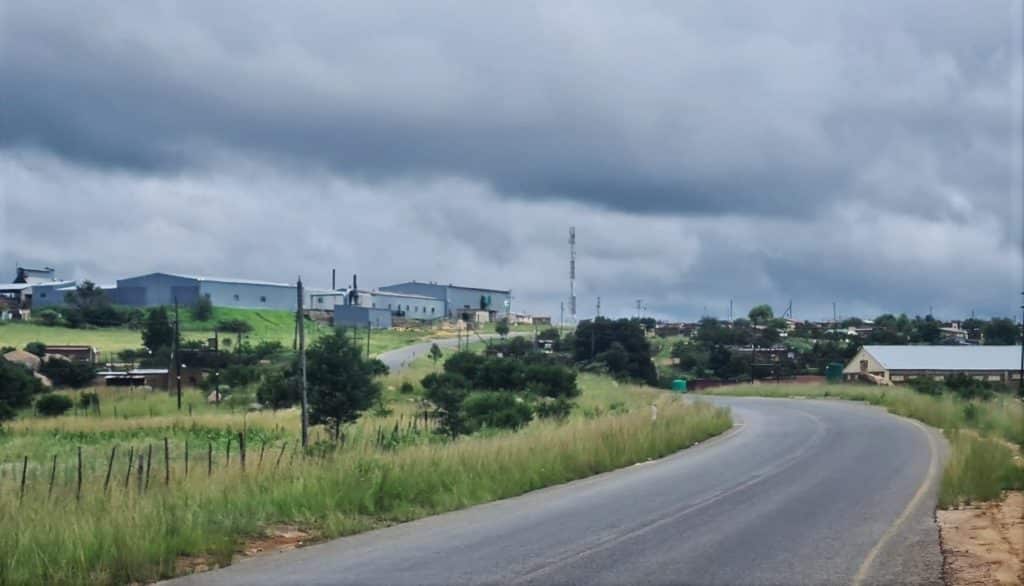
On 3 February, I encounter a group gathered by the sawmill ‘who came from a memorial’ for Nkosi. Most were dressed in new-looking CCEPWAWU
T-shirts. CCEPWAWU is the Chemical, Energy, Paper, Printing, Wood, and Allied Workers’ Union, under the COSATU umbrella. Johan Crouse (no relation), has been CCEPWAWU’s bane, providing the background context to this ‘labour dispute’.
Crouse worked his way up through the civil service for four decades until becoming Labour Registrar, in which capacity he attempted to place CCEPWAWU under administration for failing to provide any accounts to auditors over five years by 2015.
As a result, Crouse was suspended by then-Labour Minister Mildred Oliphant for ‘gross insubordination’. The Labour Court would later rule that Crouse’s suspension was ‘irrational and invalid’, but in the meantime CCEPWAWU failed to reform.
In June 2020 CCEPWAWU was finally placed under administration and the stakes are high. Despite its decline, the union still represents a reported 21 000 members and holds a R6-billion pension pot, the alleged abuse of which lies at the heart of corruption allegations.
‘The way I feel on the ground, the upper structure left me abandoned,’ said Sipho Dlamini, a CCEPAWU employee and lead union representative at the Empuluzi sawmill. Dlamini comes across as an affable fellow who charismatically transformed Nkosi’s ‘memorial’ into a political rally.
Dlamini led the crowd after ‘Nkosi’s memorial’ in well-worn chants: ‘Long live the ANC Youth League, Long Live … Long live the ANC Women’s league, Long Live … Long live the ANC, Long Live!’
Dlamini was proud to show that the demonstration was ‘peacefully dispersed’ under his leadership, and to demonstrate his warm relations with local police. Dlamini was also very helpful in taking me to the Nkosi household, and in showing me the spot where Nkosi was allegedly shot by sawmill security.
According to Dlamini, the Normandien Sawmill at Mayflower is squarely responsible for Nkosi’s death. Dlamini believes that Nkosi was shot with live ammunition, not a rubber bullet, under direct instruction. Dlamini also claims that footage from the sawmill’s security cameras was deliberately destroyed ‘to hide what really happened’.
According to Dlamini, Anton Wilson, the sawmill manager, ‘said go and shoot them’. This charge was repeated by an EFF-branded Facebook account shortly before Wilson’s arrest for murder.
Dlamini also points out that the umbrella company running the sawmill, Normandien Farms, was associated with a separate case in which workers were shot at (none killed) in a 2016/2017 labour dispute at a mill in Piet Retief. As a grace note, Dlamini says the same employer was rude to Police Minister Bheki Cele, showing ‘arrogance’, and a disdain for ‘our people’ and ‘workers’.
When did labour relations turn ‘sour’?
Dlamini says ‘all was well’ until manager Wilson ‘beat two women’ in July 2019. This made the relationship ‘turn sour’.
Lawrence Hoatson, a Normandien Farms co-owner, reportedly said he would ‘never fire’ Wilson, which Dlamini took to be an admission of guilt and an indication that Hoatson’s ownership is morally corrupt. ‘I suspect everything that is happening is from the owner’.
But now after Nkosi’s death, ‘we know the owners must go’, said Dlamini. ‘Before, we thought maybe we can work with them. But now that one of us is dead those owners can never stay here. No one will work for them in Empuluzi. You can be sure.’
I am not so sure; people are hungry and need work of which there is little else besides what the sawmill provides. But Dlamini correctly notes that Empuluzi is a small community, ‘not like Joburg’, suggesting that even those who still want to work at the sawmill will ‘learn’ from their ‘neighbours’ to stay away from ‘these owners’.
Driving away after talking to Dlamini, I think: this is it, this is White Monopoly Capital made flesh. A white owner employs a white manager to beat black women and then defends him without question. Then the white manager sends in foot soldiers with instructions to shoot and kill black youth. Cry the beloved country.
But this version needs corroboration. For one thing, if bad ‘umlungus’ made the relationship sour, why only now, when they have been in charge for a decade already? No one knows, or no one will open up to me, and all those in CCEPAWU shirts say, ‘talk to our leader’.
The outsider’s view
Finally, a bystander who happened to be there on 2 February but does not work at the sawmill agrees to talk, revealing that protesters had not been ‘peaceful’, as Dlamini previously claimed. Rather, the protesters had been terrorising workers and the community at large by blockading the road that passes the sawmill with burning tires and rocks for a week leading to the incident on 2 February.
One interesting thing about this version is that rocks and the scorched and tangled cords from tyres are still visible next to the road, where they had been swept aside.
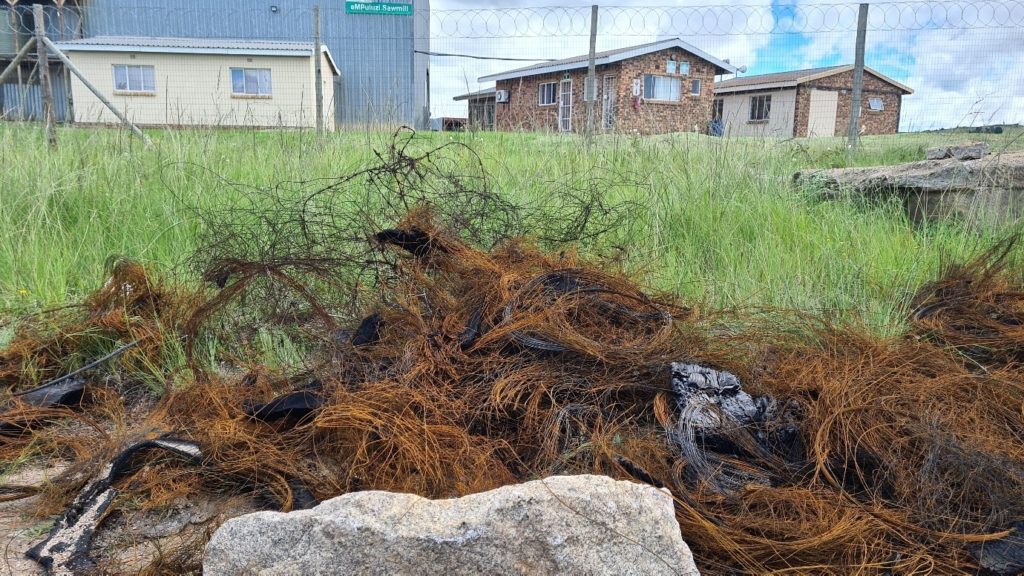
Why the burn? The bystander explains that about 250 workers had been fired from the Empuluzi sawmill in January after a series of disputes dating back to 2020. The details are unclear to this person, but the upshot is that roughly 50 kept their jobs. ‘The 250 that were fired were stopping the 50 from going to work. That way no one has a job. Simple’.
The Labour Court confirms that Fana Nkosi was not shot at a ‘labour dispute’, because he and the other ‘250’ no longer worked at the Empuluzi sawmill. This might seem like a technicality, but the poor, disheveled bystander is emphatic on the point.
‘It was a war…. The 50 were trying to work. The 250 were on the road to stop that. You can think to yourself on these numbers, the minority can never win. The 250 were throwing them with stones. They hit some.’
When the security came out, they were surrounded on both sides, facing an onslaught of stones, becoming part of the ‘50’.
‘If security had not come one of the 50 would have been dead from the 250, I’m telling you. Dead! But now one of the 250 is dead. Either which way, one was going to die. What do you call this? I call it a war zone.’
I take this person’s details but agree not to share them. ‘They can kill me for telling you this. They can rather say the security come to shoot a peaceful [protest]. But that 250 was never a peaceful. Not yesterday. Not the week before. Not last year even.’
‘Gundwane’ – Are workers ‘rats’ or humans?
Half a dozen non-unionised employees who kept their jobs eventually agree to talk to me, timidly at first. They have all been described as ‘izinyoka’ (snake) and as ‘gundwane’ (rat) by colleagues.
It is impossible, they say, to publicly push back, because they just get vilified as ‘sell-outs to umlungu’. But now they want their story heard, and in the end, they defiantly instruct me to use their names too.
Nonthulela Patricia Dlamini puts it the most simply, in terms I have heard before in our rural heartland, ‘My faith is in God. If I die for saying this then my day has come. Truth. That is the way and the path.’
The ‘truth’ that emerges is of labour relations ‘turning sour’ much earlier than Dlamini would have me believe, starting with his own ‘fiery’ arrival in 2016. On this version, Wilson never assaulted ‘two women’ in 2019, but rather was maligned by an accusation which was then thrown out of court.
In December 2019, attempts to undermine management’s authority escalated when Dlamini thrice failed to attend negotiations over annual pay rises and then triggered a vote to strike in early 2020, after the company communicated its pay-raise proposal to general staff. One employee says the ballot had no question, just ‘yes’ or ‘no’. Most voted yes, granting the right to strike.
But this also meant that after 48 hours, the owners had the right to shut down the mill – impose a ‘lockout’ – which they did. Patricia Senzi Kileshongwe, a clerk, describes the bewilderment that followed.
‘The workers were only told we have rights. No one explained the company also has a right. If we can strike, they can lockout. That is the law. But people did not know that.’
Patricia believes that if ‘we can only understand each other the same way’, conflict will be easier to resolve, but in the absence of such an understanding ‘it comes to fire’.
By all accounts, Fana Nkosi is one of those who would have been confused by the sudden sawmill lockout. The lockout morphed into National Lockdown, which then morphed back into lockout, at which point the owners wanted work to begin again, having lost several months of productivity.
But this was not straightforward. Jabulani Patrick Vilikhazi, a young but rising star at the mill, was expelled from union meetings because he is not unionised and because ‘I told them what you are saying is not true’. He too was called ‘rat’ and ‘snake’ and told to go home. His cousin returned from a shebeen to tell him people were plotting his murder.
From ‘sour’ to ‘revolting’
On 8 July 2020 a skeleton staff began to prepare the sawmill for Covid-19 compliance. After lunch, strikers arrived, burning tires at the gates and preventing the skeleton staff from leaving the sawmill unless ‘demands’ were met. SAPS was called at around 2pm, but only arrived two hours later.
Strikers continued to throw stones through the fence at workers inside the sawmill grounds. This took place in the presence, it is alleged, of the station commander, Captain David Zwane, who merely laughed.
Construct Mayisela, a senior manager, told me this earnestly. He believes it is the police’s job to prevent, not laugh at, a de facto hostage situation, especially the station commander, ‘who needs to set an example’.
This version also contradicts Dlamini’s claim that strikers were always ‘peaceful’, and it is backed up by video too.
As darkness fell on the cold winter night during the siege last July, workers trapped inside by fire and pelted stones still could not escape. Had the police totally abandoned the scene? Construct went out to look and saw something he will never forget.
‘Outside I am watching the police warm their hands by the burning tires, together with the protesters. Can you imagine?’
After another sombre pause, he burst out laughing, repeating the unthinkable. What else can you do?
Construct reminds us that South Africa is generally a dangerous place ‘but when the police come, then, at least, you should feel safe’. What disturbs him most is that he felt nothing of the sort. It gets worse.
By 10pm, armoured sawmill vehicles under security escort delivered the besieged workers from the business. En route to assisting colleagues, Construct heard the bad news, that ‘the protesters are not going home. They are going to your house. They are being escorted by SAPS’.
Construct’s family were sleeping, but his son heard the protesters chanting down the street and went out to lock their front gate as the mob approached. As he turned back to the house, ‘they shaya him with stones’, striking and injuring him, and breaking windows, before hurling a defunct petrol-bomb at the house. Photos taken the next day show the damaged property, but not his son’s injured body.

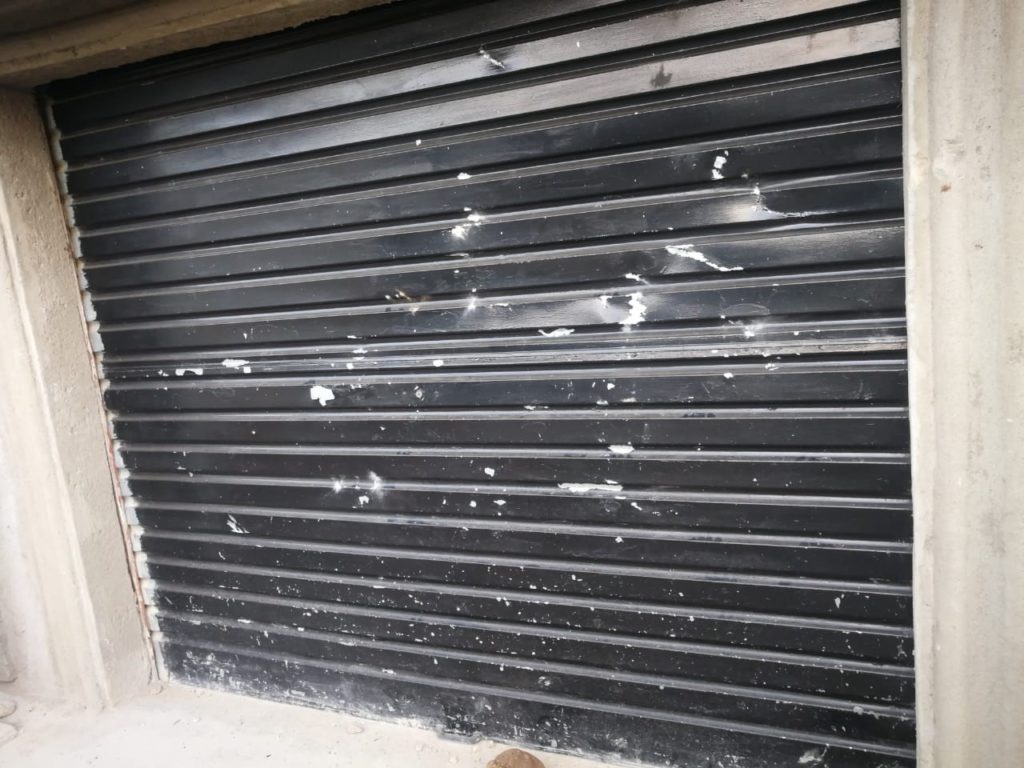

The mob also ‘shaya the bakkie of another employee’, Peter Maunze, as he drove by. ‘They would have killed him, but his bakkie was strong enough to make the escape,’ says Construct. Maunze says: ‘They were destroying the vehicle, I was…very worried.’
Construct shows me a video of the mob leaving his property, followed casually by two police vans. No arrests were made. Construct is not laughing at SAPS’s lackadaisical attitude at this point of the story.
The mob and the police vans allegedly snaked their way to another non-unionised employee’s house but were intercepted by Construct and sawmill security guards, who fired warning shots to disperse the crowd while the police looked on.
Construct’s ire is most firmly directed at Captain Zwane’s presence and inaction. ‘In effect they were condoning these people. We went to open a case that night.’
The next night Construct learned on returning from work that his recently assaulted son had been summoned to the police station hours earlier and had not yet come home. He went to the police station – something of an open house – where he stumbled on a disturbing exchange.
Captain Zwane, facing the other way, was condoning the previous night’s attack, claiming Construct had sided with management.
Astonished, Construct began recording the conversation. Later, he arranged to meet Captain Zwane to replay that conversation, while making another recording. Despite this frank attempt to hold Captain Zwane to a better standard, no arrests were made for the various attacks on the sawmill, or on Construct’s home that night.
Revolution
I was wrong, I think, but this is still it, the revolution in miniature. Almost the only value-adders in ‘town’ are stigmatised as ‘umlungu’ or ‘gundwane’ until attackers hardly see these people as people, much less as colleagues or citizens to serve and protect. ‘I’ll take what I can get’, is the theory and practice of the streets. Police look on with philosophical demur, at best, as the law they are sworn to protect is milled into sawdust.
But for all that the ‘little Revolution’ was stalled by a combination of private security and exhaustion, only to return in a more sophisticated form. After business resumed, Jabulani Vilikhazi was cornered at the factory by former strikers armed with planks and a memorandum, he says. The latter included a demand that Construct drop the charges for attacking his home and family. They wanted Jabulani to submit the memorandum in a clear effort to turn him and Construct against one another.
Jabulani refused to submit, so his phone was struck from his hand and he was pushed around. ‘I don’t want to beat him back because I know the law of the company,’ he said clenching his fists.
Wilson broke through the crowd, pulling Jabulani to safety, as security was hailed. On a separate occasion, Wilson was locked in his office and the key was hidden or thrown away. On another occasion, I’m told, an HR manager was effectively held hostage by members of the ‘250’ within sight of the police station.
Where exactly was Fana Nkosi in all of this? From what I can gather he was as far from ‘the action’ as he could possibly be while at work, in the few months that working was possible.
The ‘Revolution’ went digital. The Mayflower Empowerment Forum Facebook platform became the highest plank on which value-grabbers could etch their fantasies under false names, one being ‘Jabulani’.
The fake ‘Jabulani’ avatar said Construct is a ‘dog’, a ‘white man’s dog’, ‘inja yomlungu’. A commentator offered to ‘eliminate’ Construct for a price. Wilson was also targeted.
Construct opened a case of intimidation, but the police quashed that too, saying they could not investigate threats from an avatar account, reportedly because they ‘don’t have electricity’.
The tension broke again at this point in the story to the sound of Construct’s laugh. ‘Can you imagine this is you?’
Revolting turns deadly
The final ‘issue’ of contention between the ‘250’ and the ‘50’ is similarly detached from every expectation I had going into Empuluzi. On 4 January 2021, one of the 80-plus ‘casual’ workers whose fixed-term contract ended in December 2020 was discovered back at the mill, taking a chance at sneaking himself back into a job. He was told, ‘nice try, go home’.
This prompted outrage. Most workers downed tools by lunch, soon to go ‘sleep on the grass’.
Several non-unionised staff clutched their hair when recounting this moment. ‘I couldn’t understand, it was making me mad,’ said Nonthulela. ‘How can you ask us to strike for someone who does not even work here? He was a temporary, a casual. It was all in the contract. What, what, what does this mean?’
Sanele Milanzi, on the shopfloor, did not want to stop working. ‘But I’m here to work,’ she said, ‘how can I not work? I am not part of this, leave me. I just want to work freely.’
Cry the beloved country, where people just want to work freely. An illegal strike action commenced, which after weeks of warnings results in about 250 staff being dismissed. At this point, 26 January, the road was blockaded to protest the dismissal, just as my informant described.
Mayoral intervention
Daniel Pitoli Nkosi, the executive mayor of Chief Albert Luthuli Municipality, which covers Empuluzi, intervened a few days after that. ‘To me it was a successful meeting (with management)’, he said. The sawmill owners conceded that they could, in principle, re-hire most, but certainly not all, of the former workers.
Bu these concessions did not stop the protests, which continued to block all business. Jabulani could not understand this either.
‘If they think they have been unfairly dismissed they must go to CCMA, they must go to Labour Court. There is a process to protect them if’ – and he looks around – ‘they really think they were treated unfairly. But they must let us work.’ Exasperated, he adds: ‘Why can’t we work? Can you tell me why?’
On 31 January, Wilson told SAPS, locally and regionally, that the sawmill would be going back to business, requesting assistance in keep the road outside safe for entry and egress, in anticipation of further disruption.
On 1 February, a skeleton crew tried to come in and prepare the factory for business. But they faced opposition, and at least one worker, Mwzandile Nkosi, was assaulted outside the sawmill. No SAPS were present.
On Monday night Wilson told SAPS again that a fuller crew would be coming the next day, and again pleaded for SAPS to keep the peace.
Early on Tuesday morning SAPS was not there, so the ‘250’ mob had carte blanche to pelt stones at people going to work by foot. When Mzwandile Nkosi, among others, was caught once again in the ‘war zone’ – this time being stoned so badly that the local clinic would later send him off to a larger hospital – security left the gates to intervene, to escort workers safely in. But protesters came at them from both sides with stones, on their version. They fired shots. Fana Nkosi was struck in the neck and fell.
On union leader Dlamini’s version, the Cosatu crew that picked up Fana Nkosi, still alive, in a bakkie did not go to the clinic immediately, but instead went to the police station first. Thereafter the police arrived on the scene.
In another bizarre twist, when many of the ‘50’ went to the police station to secure a protection order, they were, on several accounts, turned away ‘because the police said the printer is not working’.
Wilson says the police sent them to the magistrates court to get an injunction, but there they were told to go to the Labour Court, on the supposition that this was a ‘labour dispute’. But the Labour Court held that this could not be a labour dispute because the ‘250’ no longer worked at the sawmill. One part Kafka, two parts ‘war zone’; that was Empuluzi.
Introspect
Construct said that ‘what I want after Fana’s death is for us to introspect’. But I wonder if the paradoxes run too deep to make this possible.
To start with, Mayor Nkosi is in an impossible position. At the memorial people were chanting ANC songs, so, politically, he has a reason to stay onside with CCEPWAWU. But the union has also led illegal and destructive behaviour, undermining the very legitimacy upon which his executive power rests.
CCEPWAWU’s Dlamini is trapped in a paradox too. The ‘upper structures’ of the union to which he belongs shows no respect for accounting or accountability. But without CCEPWAWU he would be unemployed. Dlamini wants his workers to get more money, but the alliance to which he belongs presided over a lost decade for those outside the kleptocracy. Without growth there are no competing sawmills in Empuluzi, so there is no credible threat to leave this one and work elsewhere instead. That undermines the very power upon which unions depend. The harder Dlamini pushes, the weaker he becomes.
Construct, Jabulani, Senele, Nonthulela, and Patricia want to work and make some money, but also to be respected as upstanding members of their community. But community authorities deem hard workers to be ‘rats’. What are they to do?
The sawmill owners face a strange paradox too. They can withdraw, sell, and ship off to another country that operates under the Rule of Law. Or they can remember that unloved dream of rainbow prosperity and invest in rural South Africa. But if they want the business to operate, they have to hire a private army.
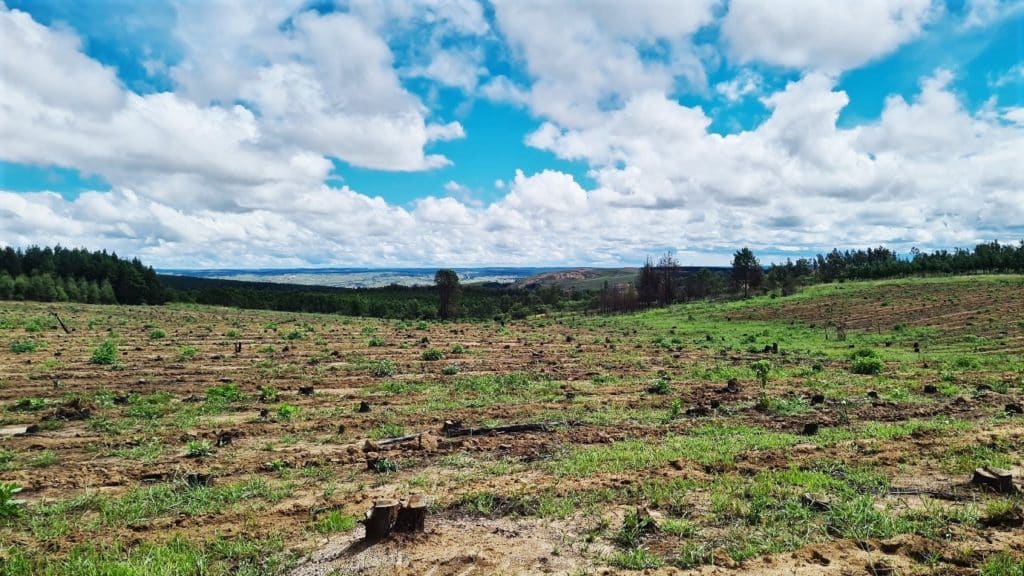
The aftermath
One pressing question is, will justice be served? Without knowing exactly what happened on 2 February it is impossible to be sure what that means, but there is serious reason to doubt that Empuluzi police will act impartially.
On 2 February, ‘Mum Hlazi’, despite the warnings of her colleagues, was so terrified that she tried to escape from the chaos through a hole previously made by protesters in a back fence leading to the open veld. She was caught on a lonely dirt road and assaulted, incurring serious head and back injuries.
Wilson chased after her in a bakkie. When he found her, she was surrounded by a crowd who had tyres to hand and were reportedly torn between drowning her in the torrential river close by or burning her alive. Having rescued her, Wilson took her to hospital. A case has been opened, but no arrests made.
‘Mum Hlazi’ is one of several people that I’m told were sure to have died that day had it not been for interventions by sawmill security and management. Yet I can find no evidence of the police pursuing these cases, or those of intimidation, assault, and destruction of property, or the theft of a shotgun from one of the security guards in a melee that followed Nkosi’s death.
This is not for a lack of evidence. Mayor Nkosi confirmed to me that Wilson was assaulted before his very eyes, and in the presence of Captain Zwane too, on 2 February.
Moreover, Vukani Wiseman Mbhele, a manager in the security company the Empuluzi sawmill hired, had something to say about the four charges of murder.
Mbhele swore in an affidavit that Sergeant Thwala, with whom Jabulani alleges previous unpleasant encounters, told him ‘off the record, it would be better if the guards said that they were sent by Mr Wilson to shoot the protesters.’
He further submits that ‘I believe [Thwala’s] version of the facts is untrue and that Sergeant Thwala is attempting to fabricate a version of facts to suit his agenda or that which is rumoured by the disgruntled protesters’.
The version the security officials who were there on the day uphold is that they fired shots ‘since their lives were in danger’. But will those who thought it was their ‘right’ to throw stones and burn tyres and attack Mum Hlazi ever think that ‘gundwane’ and ‘umlungu’ have a right to life?
Is there any hope for Empuluzi? ‘Only if SAPS does their job,’ is Construct’s response. ‘That is the one and only way.’
Will the sawmill survive? Jon Hoatson – Lawrence Hoatson’s son – is making contingency plans to move the plant elsewhere if need be, so that it can return to business.
I asked the mayor whether he thought Dlamini’s idea for the owners to leave was a good one?
‘No, no. That is like closing your eyes because you do not like what you see. That mill employs many, many people.’ He muses that ‘the alternative could be even worse’.
Fana Nkosi
At the heart of this story is a dead man, almost my age, who leaves behind a desperate sister and a young son. One sawmill employee said ‘most people here are very poor and also very reasonable. They want to work to grow. But others come from outside and stoke this sensation’ of ‘fire’ against white people and determined workers alike. ‘For others, they don’t feel the sensation, but they go along from fear to contradict the firebrands.’
Fana Nkosi seems to be one of those who caved in to ‘peer pressure’. Sanele says he was always a hard worker who did not go along with the crowd. Construct remembers him forging on when the majority downed their tools.
‘He was a person who if you gave him an instruction would execute the instruction.’ So, Construct was ‘very surprised’ to see that he eventually joined the strikers. But perhaps Fana Nkosi’s eventual participation was, in its way, under ‘instruction’ too.
‘It must have been a strong peer pressure that pushed him to join that crowd’, Construct bitterly concluded.
We will never know for certain.
If you like what you have just read, support the Daily Friend

